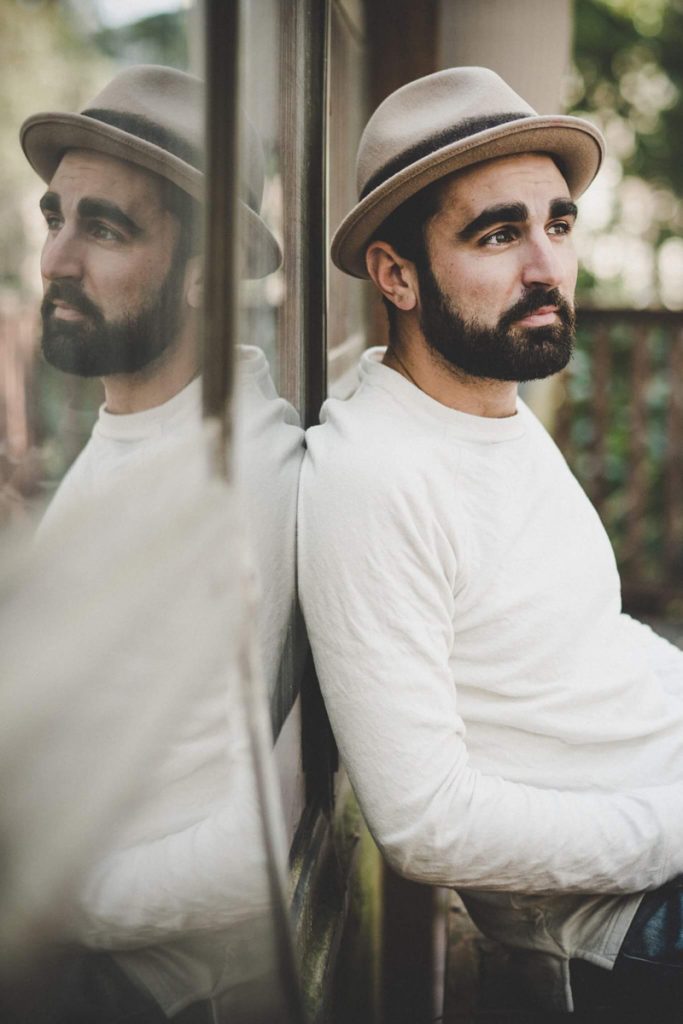FILM | ANDREA CHASE
Italian-born neighborhood resident Pietro Pinto didn’t set out to make a film about boxers. After winning a place in the Jerusalem Film Workshop a few years back, he arrived in Israel for the first time in his life with less than two weeks to find a subject for his short film, which will screen at the upcoming San Francisco Jewish Film Festival.
Pinto had been one of the Bay Area’s young and emerging filmmakers between the ages of 19 to 27 chosen to participate in a six-week summer filmmaking workshop in Israel and produce a short to be screened at the festival. Fate led him to the Jerusalem Boxing Club, and to Nur and Arthur, the two protagonists of “Jerusalem in Between,” his visually poetic, philosophically dense consideration of Palestinian-Israeli relations.
Pinto acknowledges the irony of using boxing when talking about detente. “It’s the perfect metaphor,” he says. “Of course, it’s fighting — but it’s also training together, instead of just looking for a victory.”
In fact, he says the first time he saw Nur and Arthur, they were sparring together in the only boxing club in Jerusalem in which a Palestinian and an Israeli could do so.
He knew it was the film he wanted to make, but convincing the Jewish Film Workshop was another matter. He persevered, introducing the young men to the producers, who finally agreed the story should be told. Thus began a four-week shoot and, for Pinto, two new friendships.
“They are both very different. I think they are both genuine and they speak from their hearts,” Pinto says of the two sparring friends. “Nur especially has some ideas about love and hate, about fighting and achieving something, that are very inspiring. I was moved doing the interviews. I found exactly what I was looking for.”
In the film, comparison and contrast drives how they are introduced. Cutting between the two as they go about their lives, Pinto focuses on details, finding commonality. Their narration offers personal history and a philosophy of life. The idea behind his cinematic choice speaks to Pinto’s vision of what he wants viewers to come away with after seeing his film.
“My idea when I met Nur and Arthur was to tell the story of one single person — to tell the story of two young guys as if they were one,” he says. “That’s why at the beginning, there are only body parts and we don’t see their faces. I didn’t want to disclose who is Israeli and who is Arab. I really didn’t want people to think in terms of Israel and Palestine, but rather of human beings.”
That idea informs the structure of the film, which is rife with strong visual images, each of which underscores the idea of unity while following a narrative that finds the two men moving toward one another before finally meeting in the boxing ring.
One of the best and most penetrating visual juxtapositions Pinto presents shows Nur threading the strips of his hand wrap before boxing, and Arthur wrapping tefillin around his arm and hand before prayer.
“That region of the world is so filled with religion, with symbols, with feelings and beliefs,” he says. “Everything is one. It’s something you can’t explain logically, but it’s exactly the same act. So for me, it was a way of to establish a connection.”
The film offers an optimistic vision, but one tempered by current realities.
“It’s definitely optimistic, but also we know how tragic the situation is,” Pinto says. “Everyone will draw their own conclusions and ask themselves if it isn’t better to do something positive.”
Pinto has lived all over the world, including in Europe while studying international politics and in Cuba while studying film. Eventually he was invited into the M.F.A. program at San Francisco State, where he made “Rosita,” a short film about an older San Francisco gay couple that screened at the Venice Film Festival. In the process, he fell in love with San Francisco in general and with the Fillmore neighborhood in particular.
“Every step in San Francisco is poetry for me — from the bay, to the parks, to the people, to the open mindedness,” he says, noting he’s particularly enamored of the views the neighborhood parks provide. “On Saturday and Sunday, I have breakfast in the park. I take in the views and I get inspired by them,” he says.
Pinto is now at work on his next film, “The Suicide,” set in a dystopian future and exploring what happens to society when death has been outlawed.
The San Francisco Jewish Film Festival runs from July 18 to August 4, with films showing in five different locations around the Bay Area. “Jerusalem in Between” screens on August 2 at 2 p.m. with “The Passenger,” directed by Ryan Porush, at the Piedmont Theatre in Oakland.
Filed under: Film






